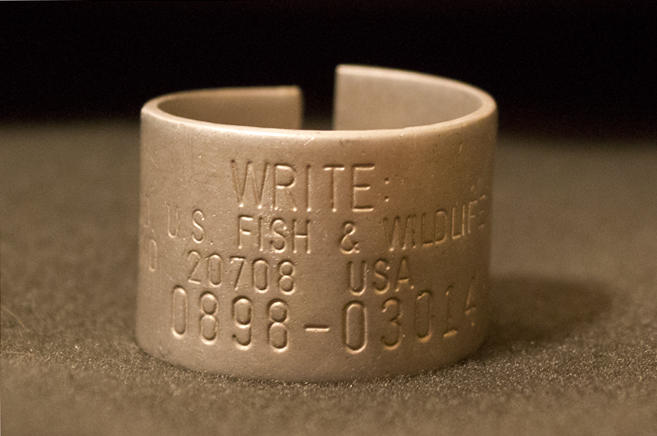Bird banding is a valuable tool in the study and conservation of many bird species. In this series, we’ll explain bird banding practices and explore insights gleaned from the observation of banded birds here on North Carolina’s coast and beyond. Now we’re looking back—to see how this important practice has evolved into what it is today.
Please welcome guest writer, Katharine Frazier.
Chances are, you’ve happened to see a bird at some point with a band around its leg. You might have noticed that this band had numbers and letters written on it—but what did they mean? More importantly, what was the purpose of this band in the first place?
Bird banding is a method of tracking and identifying birds. It involves attaching a small, ring-like band of plastic or metal to a bird’s leg, which can be used to identify the bird. The data gathered from sightings of banded birds helps ornithologists study birds’ migration routes, lifespans and nesting habits.
Although it may seem like a fairly new practice, bird banding, in one form or another, has actually been around for hundreds of years!
From Rome to the Middle Ages:
Evidence shows bird banding was used as early as 218-201 BC, during the Punic Wars. According to the Cornell Lab of Ornithology, records show Roman officers tied threads around the legs of birds, which served as messages to fellow soldiers.
In the Middle Ages, European falconers marked their birds with leg bands to show ownership. One of the first instances of a bird being identified by its band in the Middle Ages was around 1595, when a banded Peregrine Falcon, belonging to Henry IV was spotted in Malta—1,350 miles away from its home in France!
While these early instances of bird banding weren’t used for the same scientific purposes as banding is used today, the practice soon started to study birds in the year 1669, when Duke Ferdinand placed a silver band around the leg of a grey Heron. This same bird—identified by its band—was found by the Duke’s grandson in 1728. Despite the fact that this observation took place several hundred years ago, today’s scientists use bands in a very similar way to determine a bird’s age.
Bringing bird banding to the sciences:
The scientific use of banding was furthered by John James Audubon, one of the first to conduct banding experiments in North America. In the early 1800s, while in the midst of studying and painting North American birds, Audubon banded several young Eastern Phoebes at their nesting site near Philadelphia. The next year, he noticed that the previous year’s phoebes—easily distinguished by their banded legs—had returned to the same nesting site.

Without the bands, it might have seemed as though they were just another flock of phoebes arriving in the area to nest, but the presence of the bands revealed the species’ nesting site fidelity and provided a glimpse into the birds’ nesting and migratory patterns. This was an exciting discovery, and it wouldn’t have been possible without Audubon’s decision to band the birds.
While early bird banding definitely had its uses—whether it was sending messages or making some of the first ornithological discoveries—it wasn’t until the 1900s that banding began to resemble the system in place today.
Next, take a look at how the modern banding system came to be!



